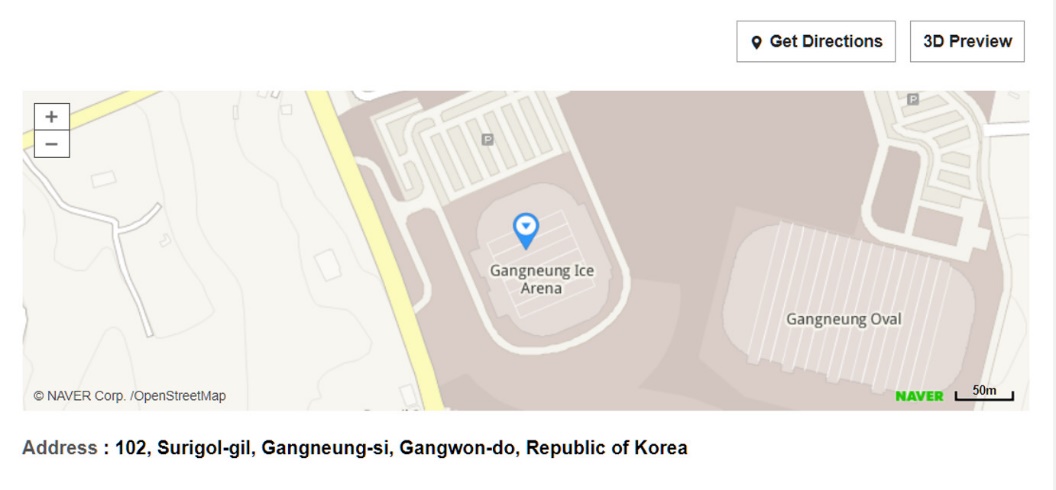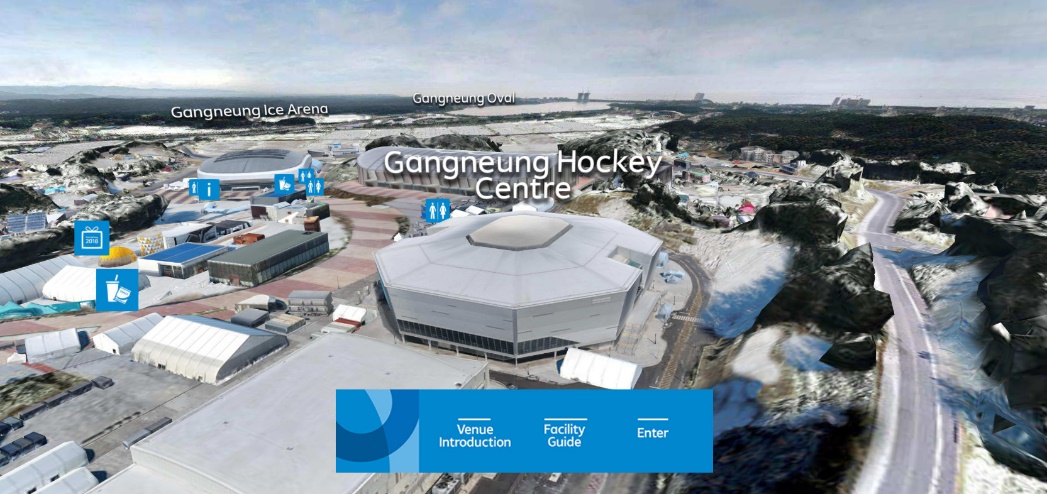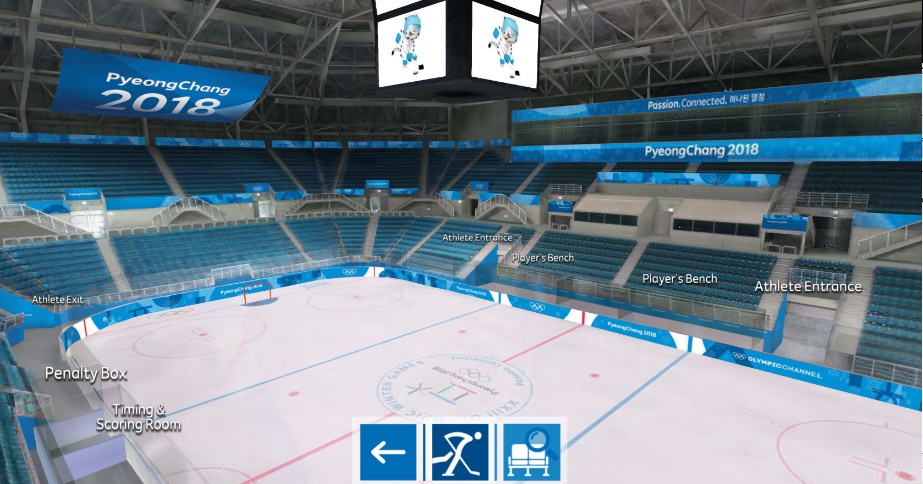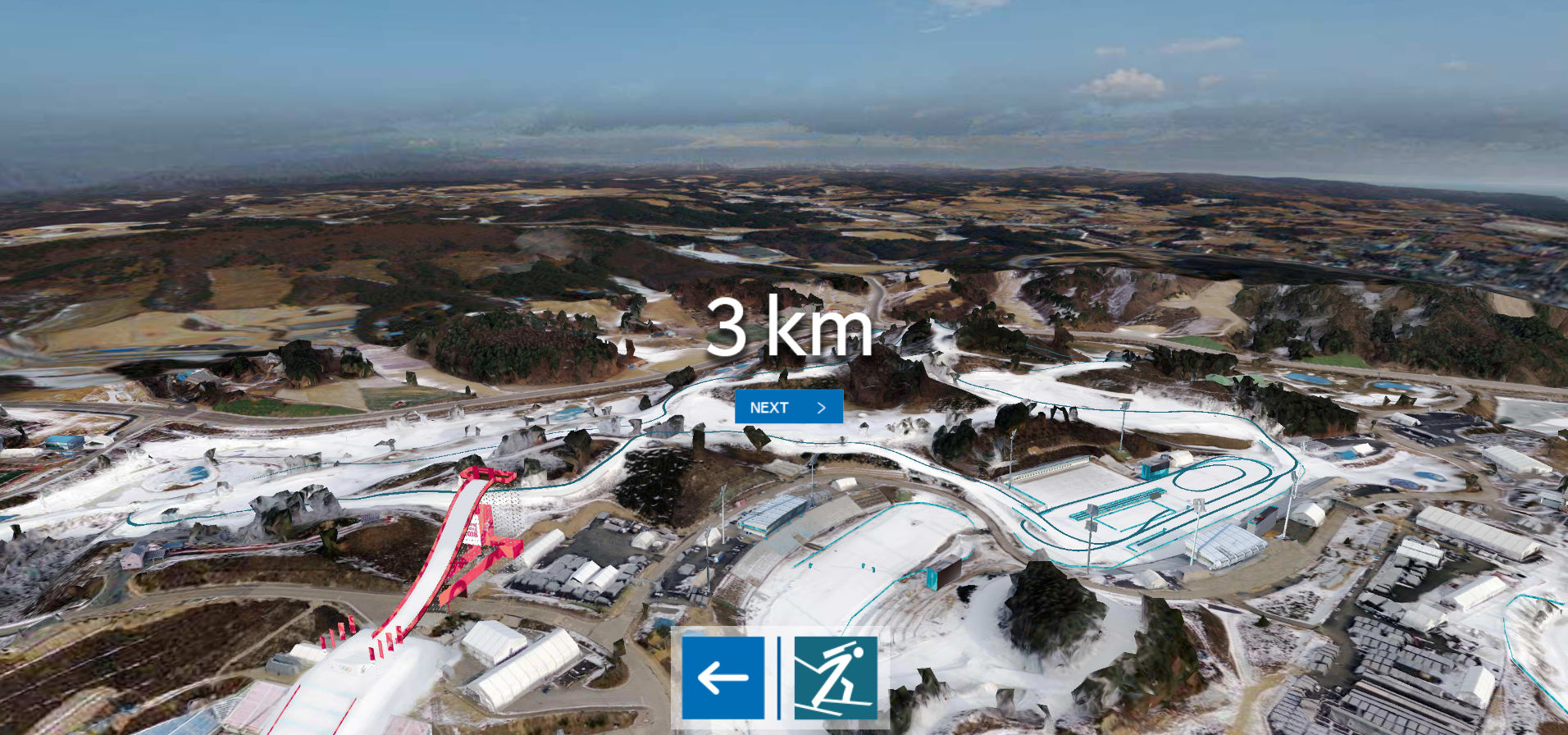3D tours of the Olympic palaces
The official website of the Korean Winter Olympics is actively using 3D to visualize sports facilities, terrain and infrastructure.

Holding the Olympics is a big burden and a serious responsibility for the organizing state. Dozens of sports facilities, auxiliary support structures and hundreds of thousands of guests who arrive in an unknown country. A huge help is various information sources about the venues of sporting events, where the main component is the official website of the Olympics. It offers all kinds of maps, tips, timetables, photographs and even 3D. That's about the last and talk.
The main group of information data is concentrated on the Venues page., where you can select the desired sports facility and study an interactive map of the area with schematic designations of buildings. Also, next to it is easy to find the “3D Preview” button.

For almost all key sports complexes, there are 3D presentations that are made using mixed media, where three-dimensional objects are combined with volumetric photographs. This allows you to realistically transmit the original view of the area without any special load on the user equipment. And this is a definite plus. An ordinary map is just a schematic drawing, unable to convey the urban beauty of the landscape. Another thing is volume immersion in the landscapes of Olympic venues. This is a fascinating three-dimensional journey where you can not only understand the location on the ground, but also evaluate the architecture of the complexes .
Beauty is beauty, but functionality is far more important. Therefore, the developers have prepared two modes of displaying information, the same for all three-dimensional scenes. So, when you click on the “Facility Guide” link on the map, much-needed explanations appear for key and auxiliary objects, such as catering points, medical points, etc. This allows you to easily navigate the area using a mobile browser to view a 3D scene.

In some cases, the developers went even further and displayed the interior of the sports complexes in 3D .
The purpose of the electronic guide is to simply explain to visitors how to get to their destination faster. For this, an animation of the movement of the camera is used. There is also the opportunity to look with your eyes from your future place and evaluate the proposed review. The latter, obviously, can help with the purchase of a ticket.

Depending on the type of sports facility, the logic of the “guide” in the presentation may change. So, for the biathlon center , the camera shows the key points of the route with textual explanations. This is enough to get an idea of not only the place of the competition, but also to understand the features of this sport.

The amount of work done is impressive. Almost all of the key objects of the Winter Olympics were embodied in 3D, which allows you to virtually "travel" in mobile browsers. This is convenient to do right on the spot, which, for sure, has helped thousands of Pyeongchang guests to navigate the area.
To create 3D applications, the Blend4Web framework was chosen - the development of domestic programmers.

Holding the Olympics is a big burden and a serious responsibility for the organizing state. Dozens of sports facilities, auxiliary support structures and hundreds of thousands of guests who arrive in an unknown country. A huge help is various information sources about the venues of sporting events, where the main component is the official website of the Olympics. It offers all kinds of maps, tips, timetables, photographs and even 3D. That's about the last and talk.
The main group of information data is concentrated on the Venues page., where you can select the desired sports facility and study an interactive map of the area with schematic designations of buildings. Also, next to it is easy to find the “3D Preview” button.

For almost all key sports complexes, there are 3D presentations that are made using mixed media, where three-dimensional objects are combined with volumetric photographs. This allows you to realistically transmit the original view of the area without any special load on the user equipment. And this is a definite plus. An ordinary map is just a schematic drawing, unable to convey the urban beauty of the landscape. Another thing is volume immersion in the landscapes of Olympic venues. This is a fascinating three-dimensional journey where you can not only understand the location on the ground, but also evaluate the architecture of the complexes .
Beauty is beauty, but functionality is far more important. Therefore, the developers have prepared two modes of displaying information, the same for all three-dimensional scenes. So, when you click on the “Facility Guide” link on the map, much-needed explanations appear for key and auxiliary objects, such as catering points, medical points, etc. This allows you to easily navigate the area using a mobile browser to view a 3D scene.

In some cases, the developers went even further and displayed the interior of the sports complexes in 3D .
The purpose of the electronic guide is to simply explain to visitors how to get to their destination faster. For this, an animation of the movement of the camera is used. There is also the opportunity to look with your eyes from your future place and evaluate the proposed review. The latter, obviously, can help with the purchase of a ticket.

Depending on the type of sports facility, the logic of the “guide” in the presentation may change. So, for the biathlon center , the camera shows the key points of the route with textual explanations. This is enough to get an idea of not only the place of the competition, but also to understand the features of this sport.

The amount of work done is impressive. Almost all of the key objects of the Winter Olympics were embodied in 3D, which allows you to virtually "travel" in mobile browsers. This is convenient to do right on the spot, which, for sure, has helped thousands of Pyeongchang guests to navigate the area.
To create 3D applications, the Blend4Web framework was chosen - the development of domestic programmers.
